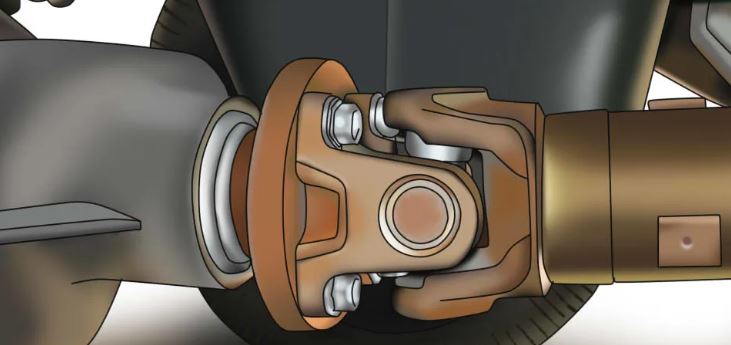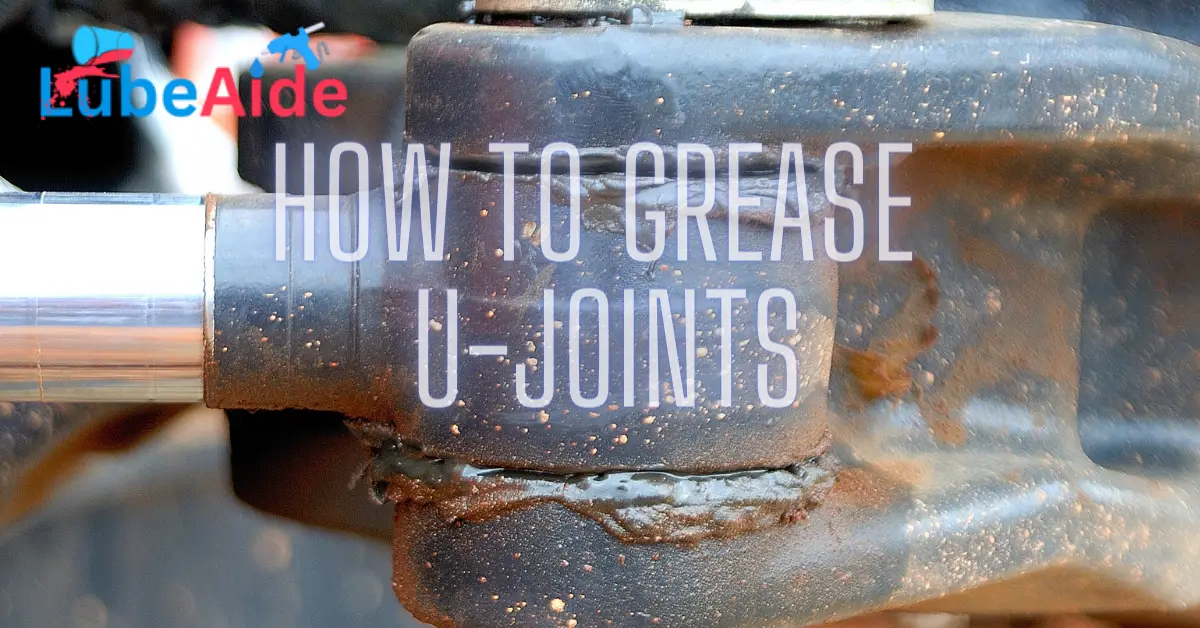U-joints, or universal joints, are a critical component of a vehicle’s drivetrain, which transfers power from the transmission to the wheels. Regular greasing of U-joints is crucial to prevent wear and tear, ensure smooth operation, and extend lifespan. Neglecting this maintenance task can result in costly repairs, increased fuel consumption, and even safety hazards. In this guide, we will take you through how to grease u-joints, including safety precautions, tools and materials required, locating and accessing, and a detailed step-by-step procedure to follow.
Safety Precautions: What to Keep in Mind Before Greasing Your U-Joints
- Refer to your vehicle owner’s manual for instructions on the type and amount of grease required for your specific U-joints.
- Park your vehicle on a level surface with the parking brake engaged and the transmission in neutral or park.
- Wear safety glasses and protective gloves to prevent grease from getting into your eyes or coming into contact with your skin.
- Ensure that the vehicle is supported securely on jack stands or a lift when accessing the U-joints.
- Never crawl under a vehicle that is only supported by a jack.
- Avoid over-greasing the U-joints, as this can cause the excess grease to splatter or attract debris, leading to premature wear and tear.
Tools and Materials Required for Greasing U-Joints
- Grease Gun: This is the most crucial tool. It allows you to apply the grease to the U-joint’s fittings.
- Grease: It’s important to use the correct type of grease recommended by your vehicle manufacturer. A high-quality, lithium-based, or synthetic grease is recommended.
- Safety Glasses and Protective Gloves: Wear safety glasses to protect your eyes from flying grease and protective gloves to keep your hands clean and prevent grease from coming into contact with your skin.
- Jack and Jack Stands or Lift: You will need to raise your vehicle and support it.
- Rags or Shop Towels: You will need these to wipe off any excess grease from the U-joints and fittings.
- Wire Brush: Use a wire brush to clean the fittings and remove any debris or rust before applying grease.
- U-Joint Grease Fittings: If your vehicle’s U-joints do not have grease fittings, you will need to purchase and install them before proceeding with the greasing process.
Locating and Accessing Your Vehicle’s U-Joints
- Consult Your Owner’s Manual: Start by consulting your vehicle’s owner’s manual to find out where your U-joints are located. The manual will also provide you with specific instructions on how to access them.
- Inspect Your Driveshaft: If you’re unable to locate the U-joints in the manual, inspect your driveshaft. They connect the driveshaft to the transmission and the rear differential.
- Look for Grease Fittings: They typically have grease fittings that can be used to inject grease into the joint. Look for small metal fittings with a small nipple or a screw cap.
- Raise Your Vehicle: To access you’ll need to raise your vehicle off the ground. Use a jack and jack stands or a lift to support your vehicle securely.
- Access U-Joints: Once you’ve raised your vehicle, locate the U-joints and position yourself to access them. You may need to remove a protective shield or loosen bolts to access them.
- Clean the Fittings: Before applying grease, clean the fittings with a wire brush to remove any debris or rust that may have accumulated.
How to Grease U-Joints: Step-by-Step Guide

- Consult Your Owner’s Manual: Check your owner’s manual to determine the recommended type and amount of grease to use.
- Locate the U-Joints: Find the location on your vehicle and position yourself to access them.
- Clean the Fittings: Use a wire brush to clean the fittings and remove any debris or rust.
- Load the Grease Gun: Load the grease gun with the recommended grease.
- Apply Grease: Place the tip of the grease gun onto the fitting and press the trigger to inject grease into the U-joint. Stop applying grease when you see the excess grease beginning to emerge from the fitting.
- Wipe Excess Grease: Use a rag or shop towel to wipe off any excess grease from the U-joint and fitting.
- Repeat for Each U-Joint: Repeat the process for each U-joint on your vehicle.
- Lower the Vehicle: Once you’ve finished greasing, carefully lower your vehicle back to the ground.
- Test Drive: Take your vehicle for a short test drive to ensure that is properly lubricated and functioning smoothly.
Common Mistakes to Avoid When Greasing U-Joints

- Over-Greasing: One of the most common mistakes people make is over-greasing their U-joints. Overgrazing can lead to excessive pressure on the joint, which can cause it to fail prematurely. Always refer to your owner’s manual for the recommended amount of grease to apply.
- Using the Wrong Type of Grease: Using the wrong type of grease can also cause damage. Consult your owner’s manual to determine the recommended type of grease to use.
- Not Cleaning the Fittings: It’s important to clean the fittings before greasing to ensure that no dirt or debris gets into the joint. Failure to clean the fittings can cause contamination and lead to premature wear and tear.
- Not Checking the Fittings: It’s important to inspect the fittings for damage before applying grease. If the fittings are damaged, they may not provide a proper seal and may need to be replaced.
- Using a Dirty Grease Gun: A dirty grease gun can also cause contamination and damage. Always clean your grease gun before use.
- Not Checking for Leaks: After greasing it’s important to check for leaks. Excessive grease around the fittings can indicate a leak and may need to be addressed.
Signs Your U-Joints Need to be Greased or Replaced

- Strange Noises: If you hear a clunking or clicking sound when accelerating or shifting gears, it could be a sign that your U-joints are worn and in need of lubrication or replacement.
- Vibration: If you feel a vibration in the vehicle when driving at higher speeds, it could indicate that your universal joints are worn or damaged. The vibration may become more noticeable as you increase speed.
- Difficulty Steering: If you experience difficulty steering or notice that the vehicle is pulling to one side, it could be a sign that one of the universal joints is failing.
- Driveshaft Play: If you notice excessive movement in the driveshaft, it could be a sign that they are worn and need to be replaced.
- Grease Leakage: If you notice grease leaking from the U-joint area, it could indicate a problem with the seal or a crack in the U-joint.
- Rust and Corrosion: If you notice rust or corrosion on the U-joint, it could be a sign that it has been exposed to moisture and needs maintenance or replacement.
Additional Tips for Maintaining Your Vehicle’s U-Joints
- Keep your U-joints clean: Dirt and debris can cause damage to your universal joints, so it’s important to keep them clean. Use a wire brush to remove any buildup or debris from around the fittings before applying grease.
- Use the right type of grease: Using the wrong type of grease can cause damage to your universal joints. Consult your owner’s manual to determine the recommended type of grease to use.
- Grease your U-joints regularly: Regularly greasing your universal joints can help prevent premature wear and tear. Consult your owner’s manual for the recommended frequency of greasing.
- Replace worn or damaged U-joints: If you notice signs of wear or damage to your universal joints, it’s important to have them replaced promptly to prevent further damage to your vehicle’s drivetrain system.
- Seek professional help: If you are unsure about how to maintain or replace your U-joints, it’s important to seek professional help from a qualified mechanic. Attempting to perform maintenance or repairs without the necessary knowledge and experience can lead to further damage to your vehicle.
FAQs About How to Grease U-Joints
Why do U-joints need to be greased?
Universal joints need to be greased to prevent excessive wear and tear due to friction between the moving parts. Lubrication helps to reduce friction and heat buildup, prolonging the life of the U-joint.
How often should I grease my U-joints?
The recommended frequency of greasing varies depending on the make and model of your vehicle. Recommended maintenance schedule.
What type of grease should I use to lubricate my U-joints?
May vary depending on the make and model of your vehicle. Consult your owner’s manual or a qualified mechanic for the recommended type of grease to use.
Can I over-grease my U-joints?
Yes, over-greasing can cause damage to the seals and fittings. It’s important to follow the recommended amount of grease and frequency of greasing.
How do I know when my U-joints need to be replaced?
Signs that may need to be replaced include unusual noises, vibration, difficulty steering, and excessive movement in the driveshaft. If you notice any of these signs, it’s important to have your U joints inspected by a qualified mechanic.
Can I grease U-joints on my own?
Greasing can be done on your own, but it’s important to follow the proper safety precautions and use the correct tools and materials. If you’re unsure about how to perform the maintenance, it’s best to seek professional help from a qualified mechanic.
Final Thought
In the end, knowing how to grease U-joints is an essential part of vehicle maintenance that can help ensure optimal performance and prevent costly repairs. By following the steps outlined in this guide, you can properly grease your vehicle’s universal joints and avoid common mistakes that can cause damage to your drivetrain system.
Maintaining your U-joints by regularly inspecting them and using the right type of grease can help extend their lifespan and prevent premature wear and tear. Remember to always follow the recommended maintenance schedule for your specific vehicle and seek professional help if you’re unsure about how to perform the maintenance.
Related Topic:
- When to Use White Lithium Grease on Rubber Bushings
- How To Remove Grease From Hands And Nails
- Where to Put Dielectric Grease on Spark Plugs
- What Happens If You Don’t Grease Brake Pads
- Why Does Grease Gun Leak: Troubleshooting Guide
- Different Types of Grease
- How to Depressurize a Grease Gun for Storage
- how to get air out of a grease gun
- How to Store a Grease Gun


